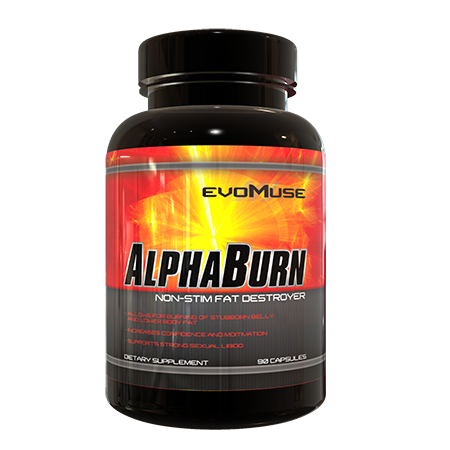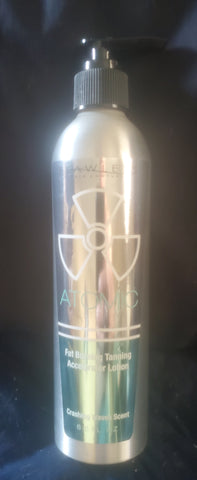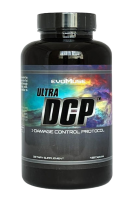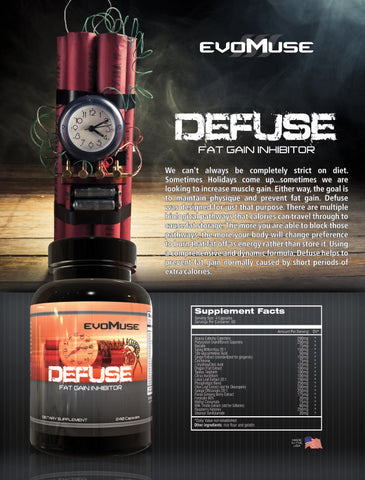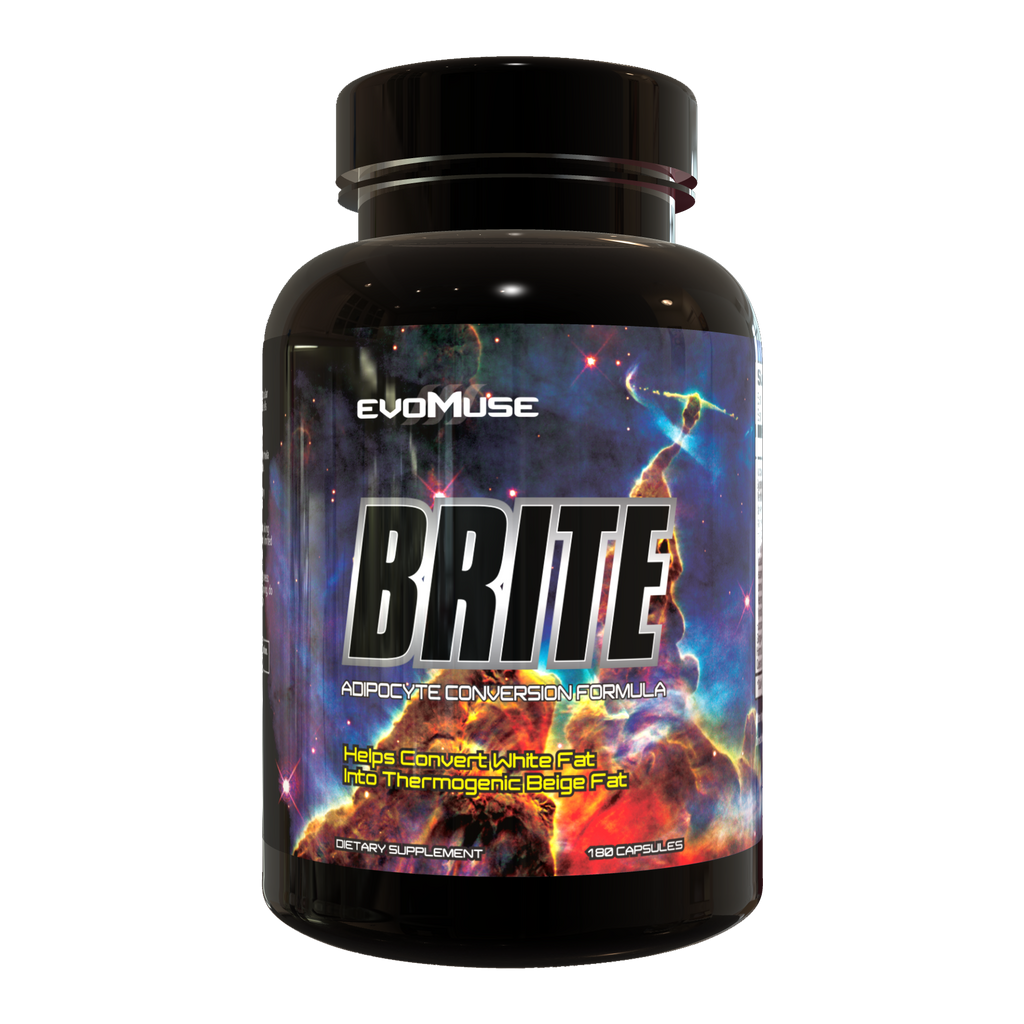
Evolutionary Muse
BRITE Enhanced 2024 Capsules
BRITE | Adipocyte Conversion Formula
"A cold, starving animal doesn't care about a 6-pack."
Perspective is a complex thing. From the perspective of an undisciplined modern human, life is surrounded by plenty and our worries can consist of trying to reach our most aesthetically pleasing selves. However, perspective for most of the creatures on the planet is harsh, difficult, and a never-ending quest for precious resources.
Heat is one of the most precious resources, as the universe contends with "hot spots" in its quest to finally attain perfect order and energy distribution – namely heat death.
Nature, on the other hand – if it can be separated from the Universe – seems obsessed with continuing bright hot spots of life, without caring about individuals. The mechanistic viewpoint of our bodies, which still reigns supreme, follows laws of thermodynamics and thus life and heat can almost be interchangeable.
As we have covered countless times, humans, in our dominant but highly artificial state, are an aberration from the general rules. Nature drives numerous animals into dormancy when resources become scarce and more energy would be spent finding calories (heat, fuel) than could be replenished. Hibernation is the name of the game for Winter. Hibernation must be prepared for, which is why hibernating animals begin gorging and getting fat during Fall. Those fat stores are our point of interest, as much of it is stored in specialized cells.
The key to thermogenesis is adrenergic signaling (meaning related to adrenaline and noradrenaline). While humans have come to rely more on B2 (and A2) signaling for active lipolysis resulting in ATP formation with increases in heat a secondary effect (to fuel activity), the animals that hibernate during cold weather rely on different receptors (B3, A1) to generate heat via thermogenesis to go along with a more passive release of adrenaline/noradrenaline, since for the most part they aren't moving much.
Human B3 receptors have lost importance, which means the first step is to increase activity here…
…but before we do that, let's take a quick step back for all those who are new to this here do-si-do.
A full decade ago, Evolutionary Muse released a first-in-kind product designed to facilitate the browning of white fat. Aptly named BRITE™, it shares the same name as those adipocytes which are named for being BROWN-IN-WHITE cells – white adipocytes which behave like brown adipocytes. Brown adipocytes are metabolically active cells which use their fat stores to generate body heat...the life hack of all life hacks, if you will. But there was one glaring problem – modern living was all but making this phenomenon a thing of the past. No problem, we should just reject modernity and embrace tradition. Right?
Wrong.
Evolutionary Muse: Inspire to Evolve. (Translation: We take a pill for that now.)
DIFFERENCE BETWEEN WAT AND BAT
BAT works quite differently, if not opposite, to White Adipose Tissue (WAT). BAT is dense in mitochondria and considered a highly thermogenic fat cell, responsible for creating heat through a process called “non-shivering thermogenesis”. This process burns calories through a futile cycle of shuttling protons to the mitochondria to generate heat. WAT, however, is what we all think of when we hear the term “body fat”. It stores calories so they can be used later during periods of hunger or famine, and secretes various adipokines.
Even more recently, we have discovered another player in the adipocyte story – Brown-in-White cells, or “BRITE”. At a microscopic level, these cells display a color between brown and white, and behave in a similar thermogenic fashion to BAT cells. While we don’t know yet if reduced thermogenic activity is a cause or consequence of obesity, we do know that an increase in BAT and/or brite cells improves glucose tolerance and insulin sensitivity.
Two distinct pathways exist towards increasing brite cells in adult humans, (1) triggering precursor cells into becoming brite cells, and (2) turning mature WAT cells into brite cells. We want to target these pathways directly so that we can increase the ratio of brite cells to WAT cells, allowing your body to constantly burn more calories. So, let’s dive into some of the known methods of brite cell creation and activation.
COLD THERAPY, B3 ADRENERGIC ACTIVATORS
Cold exposure triggers macrophages in BAT to produce catecholamines like norepinephrine. Norepinephrine agonizes b-adrenergic receptors on fat cells. Cold also activates beige cell development and function. The effect can be mimicked with B3 adrenergic activators, which also trigger PGC-1a and brite cell development. It can also be mimicked with TRPM, or cold-sensor activators.
IRISIN AND PGC-1 ALPHA
Exercise causes increased expression in muscle of PPARg coactivator 1-alpha (PGC-1a), which downstream results in a hormone/myokine called irisin. This irisin contributes to a browning of WAT cells. So not only does exercise burn calories directly, but also secondarily through triggering the browning process with irisin. Fortunately, this is an exploitable angle independent of exercise by triggering the PPARg cascade.
PRDM16, BMP-7
Prdm16 is a transcriptional cofactor, substantially enriched in human BAT compared to adjacent WAT. It acts by binding to and modulating other factors like C/EBPb, PPARy, PPARa, and the aforementioned PGC-1a. Knocking out Prdm16 negates the thermogenic effect of brown cells, and increases WAT. Considered a key driver of brown fat cell fate, this cofactor is quite important. Bone Morphogenetic Protein-7 (BMP-7) increases expression of Prdm16 in precursor cells, and is essential for brown fat development. BMP-7 is fortunately something we can target with supplementation.
ADENYLYL CYCLASE AND ALPHA-1 ADRENERGIC ACTIVATION
Adenylyl cyclase is an enzyme that catalyzes the conversion of ATP to cyclic AMP. We mentioned beta-adrenergic receptor agonism, but it turns out this is greatly enhanced with simultaneous adenylyl cyclase upregulation and alpha-1 activation. So, targeting adenylyl cyclase, alpha-1, and beta-adrenergic agonism together causes enhanced brite cell creation.
UCP1
BAT mitochondria respond to something called UCP1 (uncoupling protein 1) to burn fat and generate heat, while brite cells seem to express lower levels of UCP1. However, brite cells potentially burn fat independently of UCP1 signaling, and furthermore, with the proper triggers, brite fat can actually turn on high levels of UCP1. Multiple ingredients in the BRITE formula will encourage WAT cells to upregulate UCP1 levels. Some of you may be familiar with a somewhat popular drug in the bodybuilding community years ago called DNP (which actually has roots in the 1930s as a weight loss drug). DNP was meant to mimic activated UCP1, which drastically elevated thermogenesis. While extremely effective, unregulated uncoupling can (and did) cause hyperthermia and death. Fortunately, we now have effective ways of targeting UCP1 safely.
PHOSPHODIESTERASES
Phosphodiesterases (or PDEs from here on out) are a family of enzymes that catalyze the inactivity (and therefore homeostasis) of the cAMP and/or cGMP systems. An example we should all be familiar with is PDE5, which reduces cGMP in the erectile tissues, suppressing erectile response. Viagra, Cialis, etc., all inhibit the PDE5 enzyme, which leads to accumulation of cGMP, relaxation of penile tissues, dilation of blood vessels and eventually an erection.
The cAMP and cGMP systems are tightly controlled by physiological signals in order to maximally preserve resources. The cAMP system, for example, is related to energy states using Adenosine as a backbone (think highly depleted ATP – Adenosine Triphosphate). Elevation of cAMP leads to lipolysis, the freeing of fatty acids for transport to metabolically active tissue for either conversion to ATP or, in our case, thermogenesis.
There are two members of the PDE family that are of interest to us. One is PDE3b, the enzyme form activated by insulin to suppress lipolysis, allowing for the opposite to occur (storage of fat/carbs). By suppressing PDE3b, we preserve a state of lipolysis and fat continues to be "burned" even after eating. Inhibition of PDE3b also removes the barriers of induction of UCP1, which causes non-shivering thermogenesis (the use of fatty acids to generate heat).
The other member is a newer player, PDE4D. Working hand-in-hand with PDE3b inhibition, PDE4D inhibition amplifies adrenergic signaling, UCP1 expression, lipolysis, and amplification of thermogenesis – especially basal (baseline) levels which means the rate of lipolysis without additional stimulation. The higher the basal rate, the more fat burned/heat generated.
At the end of this inhibition, we go back to that Adenylyl Cyclase (and in the case of cGMP, Guanylyl Cyclase) creating the energy usage and replenishment cycle.
INGREDIENTS AND FUNCTION
Butcher’s Broom 50:1 Extract
Butcher’s Broom is a herb also known as Ruscus aculeatus. It gets its name from the practice of butchers using it for its supposed antibacterial properties to clean their cutting boards. It has been used in traditional medicine for its vasoconstrictive and anti-inflammatory actions (reducing swelling, preventing hemorrhoids, etc.).
The plant contains a variety of saponins, which have been shown to activate alpha-1 adrenergic receptors and stimulate the release of norepinephrine. It also has a protective effect on capillaries, strengthens blood vessels, and helps maintain healthy circulation.
As discussed previously, this alpha-1 activation is important and has been shown to shift preadipocytes to beige cells as opposed to white adipose tissue. As well, recent research shows that when hibernating, animals’ thermosensitive mechanisms will detect ambient and body temperatures and, if falling under threshold, the SNS will release norepinephrine to activate BAT in order to maintain viable body temperatures.
Gypenosides (75%)
Gypenosides are saponins found in the jiaogulan plant. This ingredient targets both WAT and BAT. With it we get WAT browning and an increase in fat oxidation genes in both WAT and BAT. Obesogenic diet mice treated with Gypenosides had a significantly reduced bodyweight vs. control, with lower cholesterol and insulin resistance. Gypenosides potently activate AMPk, which is tied directly to the cGMP/cAMP systems and sympathetic/parasympathetic nervous systems (metabolic autopilots), and amplify the lipolytic/thermogenic effects on brite cells.
Menthol Crystals
Aside from B3 adrenergic receptor activation, the other most important way to start the browning process of WAT browning, as previously discussed, is through cold exposure. By exposing the body to cold temperatures long-term, it activates the TRPM8 receptor, which triggers browning in order to more effectively use WAT to create body warmth.
TRPM8 activation also enhances the thermogenic function of brown adipocytes through UCP1 and the b-adrenergic pathway.
So Menthol mimics long-term cold exposure by activating the TRPM8 channel, which has been shown to induce WAT browning as well as an upregulation in BAT thermogenesis. This has been shown to increase core temperature, reduce body fat and improve glucose metabolism.
Vanillin
An ingredient used in fake vanilla extracts for baking, Vanillin (and its metabolite Vanillic Acid) are metabolic derivatives from Anthocyanins. In addition to favorably reducing the ratio of Firmicutes to Bacteroides, resulting in a favorable gut environment for fat loss, Vanillin potently induces both browning of white fat and expression of UCP1.
Vanillin also increases glucose uptake in muscle tissue as well as regulating redox imbalances and inflammation.
Black Pepper Extract (20% Piperine)
TRPV1 is a capsaicin and vanilloid receptor in the body that is responsible for detection and regulation of body temperature and pain. More recently this receptor has been identified as a major player in obesity and body fat regulation. Stimulation of TRPV1 has been shown to upregulate BAT and increase fat oxidation and energy expenditure. TRPA1 is a similar receptor that functions to recognize cold and pain. Piperine, as well as several other compounds in black pepper, have been shown to be TRPV1 and TRPA1 agonists, with an even greater efficacy than capsaicin.
Trans-Cinnamaldehyde
Trans-Cinnamaldehyde is a pungent compound from cinnamon or dried cassia bark. It has been shown to increase UCP1 in both WAT and BAT, inducing browning of WAT cells. It also activates the cold receptor TRPA1. Back to those rodents fed obesogenic diets, Trans-Cinnamaldehyde inhibited hypertrophy of adipose cells, decreased body fat (including visceral fat), decreased voluntary food intake, and improved insulin sensitivity.
Salvia Miltiorrhiza 20:1 (Ethanol Extract)
Salvia Miltiorrhiza is a fascinating plant containing potent compounds that inhibit an enzyme called DGAT (diacylglycerol acyltransferase). Salvia Miltiorrhiza is able to prevent the final step in esterifying lipids into the form that WAT need them in – namely triacylglycerides (triglycerides). This keeps the lipids circulating in the bloodstream to be picked up and used by peroxisomes and mitochondria, and thrown off as heat.
Salvia Miltiorrhiza also inhibits SMAD2/3 expression (see the BMP writeup), which suppresses myostatin activity and preserves muscle mass.
Salvia Miltiorrhiza has a dramatic effect on mitochondrial function in brite cells, basically turbocharging their activity by amplifying UCP1 activity.
Rutaecarpine
Contained in large quantities in the evodia fruit, it was first thought the Evodiamine was the compound responsible for the increase in non-shivering thermogenesis. Evodiamine turned out to be a huge disappointment, because it turns out the Rutaecarpine was what we were looking for.
Potently activating both AMPk and PGC-1a, Rutaecarpine also very strongly increases thermogenesis as well as mitochondrial biogenesis in brite cells. The more mitochondria, the more uncoupling and thus more thermogenesis and more fat burned.
Rutaecarpine also inhibits adipogenesis and lipogenesis, preventing lipid accumulation in WAT. Remember lipids in WAT have to be removed through a process of lipolysis before they can be transferred to metabolically active tissue and organelles (peroxisomes, mitochondria). By preventing WAT from accumulating lipids as well as crippling the body’s ability to simply make more white fat cells, all while shutting the lipids into the metabolically active brown/brite fat cells, the process of thermogenesis becomes more efficient.
Sesamol
Sesamol is a phenol derivative of sesame oil with antioxidant and anti-inflammatory properties. This is another ingredient in the formula with the aforementioned two-pronged attack. It downregulates adipogenic differentiation factors (C/EBPa, PPARy, SREBP-1) and decreases fat accumulating enzymes like fatty acid synthase (FAS), while upregulating fat oxidizing enzymes like HSL, LPL and AMPk. In mice on an obesogenic diet, it decreased fat mass and adipocyte size in both WAT and BAT by increasing UCP1 and PCG-1a.
Borneol
Borneol is a very potent P-glycoprotein efflux pump inhibitor. While “distracting” the P-gp pump, the ingredients of BRITE are able to enter the body unhindered by this physiochemical saboteur. As an additional benefit, Borneol also activates the TRPM8 cold receptor.
Myricetin-Nicotinamide Crystalline Complex
The primary superstar of the new formula, Myricetin is an incredibly diverse and hugely potent ingredient.
Let’s do a quick functional run through.
GLP-1 agonist – GLP-1 agonists are all the rage for weight loss right now. GLP-1 stands for Glucagon-like Peptide 1. Initially targeted to reverse type 2 diabetes, GLP-1 agonists soon manifested an interesting secondary effect – massive and rapid fat loss. As research gains traction, several explanations are emerging. A potent appetite suppression pathway, GLP-1 appears to be extremely active in the brain, activating brain-specific AMPk (hypothalamus, etc.) and stimulating central activation of brown/brite fat thermogenesis. They also are highly active in increasing muscle-specific glucose uptake, and are effective at improving cardiac function. GLP-1 agonists are inactivated by something called dipeptidyl peptidase-4 (DPP-4). Interestingly enough, Myricetin inhibits DPP-4, thus amplifying and prolonging its own effect.
Myricetin has also been shown to be incredibly potent at inducing brite cell conversion, activating non-shivering thermogenesis, and dramatically increasing mitochondrial biogenesis (formation of new mitochondria).
GSK3b – Touched on briefly in the TopMuscle writeup, Glycogen Synthase Kinase 3b functions to inhibit a ton of growth associated positive effects in the body. This includes muscle growth, glycogen formation, and most importantly, brown/brite fat thermogenesis. In fact, its potency at shutting down non-shivering thermogenesis is stunning. As luck (or design) would have it, Myricetin is the most potent GSK3b inhibitor so far found in natural form, with an IC50 of 900 nanomoles – incredibly potent.
PDE3b – as mentioned elsewhere, in order for BAT/BRITE thermogenesis to be maximized, both PDE3b and PDE4D need to be inhibited. As if Myricetin hasn’t already shown to be badass, it also inhibits PDE3b.
Myricetin sounds great – let’s toss that in. Well, being a flavonoid, Myricetin has one of the worst oral absorption profiles I’ve ever seen, at very low single digit %. Other absorption enhancing methods (cyclodextrin, etc.) also turned out to be disappointing. However, I worked out a crystallization process with Nicotinamide that yielded some absolutely gorgeous, and highly absorbable, crystals – enabling us to include this spectacular ingredient in the formula.
The best part? Nicotinamide is also a highly potent brown fat activating ingredient, by both amplifying adrenergic signaling at the B3 receptor and by triggering mitochondrial biogenesis, as well as increasing expression of PPARa and PGC-1a.
Fucoxanthin 40%
Fucoxanthin is a simple ingredient. It dramatically increases expression of UCP1, which should be clear by now.
Ginger-6 Specialized Extract (std for 6-Paradol, 6-Shogaol, 6-Gingerol)
Ginger is absolutely one of the most popular plants for digestion, soothing a dysfunctional stomach, and tossing back after sushi and wasabi. It is also popular for fat loss, though in previous usages sort of haphazardly tossed in. I’m sure you’ve also seen something called Grains of Paradise (6-Paradol) used in competing formulas, though with highly mixed, often disappointing results. Turns out, if you know the correct solvents to use and in what order, you can extract the 3 main “browning” compounds from Ginger in high concentrations.
6-Paradol – As mentioned it has become a commonly used ingredient. Another compound used to increase WAT browning, 6-Paradol also increases expression of PCG-1a and UCP1, resulting in increased thermogenesis with measurable temperature increases in brite/brown adipose. However, of the three it appears to be the weakest.
6-Shogaol – The immediate precursor of 6-Paradol, 6-Shogaol shows extreme promise as a thermogenic and browning agent, both in mature and preadipocytes. Increasing expression of the usual suspects (PCG-1a, UCP1), 6-Shogaol also increases mitochondrial turnover and biogenesis, increases the binding energy of ligands in the essential B3 adrenoreceptors (amplified signaling), and provides for a dramatic upregulation of beige markers, indicating significant browning of WAT.
6-Gingerol – Along with 6-Shogaol, the most dominant compound in ginger – and the most potent. Sharing functionality with 6-Shogaol (all pathways similarly, but more potently, activated), 6-Gingerol also inhibits lipogenesis. 6-Gingerol also shows an extremely potent ability to break the giant lipid droplet which characterizes WAT into smaller, multiple droplets – enabling the shift to classical brite characteristics more easily.
Humulus Japonicus Extract 50:1 (Water)
Humulus Japonicus Extract is a new and exciting addition to the formula. In addition to inducing browning of WAT, it exerts potent antioxidant effects and increases expression of both AMPk and UCP1, as well as being a decent PPAR-delta agonist. The difference in hibernating animals using more PPARa to provide mitochondrial substrate in the liver is that they generally spend the winter dormant, whereas humans have the added benefit of physical motion, thus adding PPAR-delta, which is dominant in skeletal muscle, to the mix.
Quercetin-Theobromine Crystalline Complex
An absolute thermonuclear addition to the new formula is an ingredient combination I’ve been trying to fit for years, and this is an incredibly fortuitous (that means lucky) addition. Though they are grown together into a crystalline complex, which mostly enhances absorption by several fold, we will take each ingredient separately.
Quercetin – The Big Q is an extremely common compound in most plants. In addition to acting as a potent zinc ionophore (escort molecule into the cells), it is quite the potent antioxidant. But let’s get to the good stuff…
A 2021 study showed Quercetin to do a whole host of things related to BAT/brite activation. It increases expression of PGC-1a (necessary for brite conversion) and UCP1, reduces plasma cholesterol, increases expression of the elusive (in humans) B3 adrenoreceptor (which is a key in the whole package), and as well induces mitochondrial transcription factors. Best of all? It was also discovered to be a very potent PDE4D inhibitor (see the section on phosphodiesterases/cAMP) and, less potently, a PDE3b inhibitor. Recall that both PDE3b inhibition and PDE4D inhibition are required for both browning and optimized non-shivering thermogenesis.
As a side note, Quercetin decreases Firmicutes (starts with F for Fatty) to Bacteroides ratio in the gut, thus leading to a leaner phenotype expression.
Now Quercetin, while relatively inexpensive, has horrible solubility in water and dismal oral absorption. The crystallization with Theobromine increases oral absorption substantially.
Theobromine – Starting where we left off with Quercetin, Theobromine is ALSO quite a potent PDE4D inhibitor, the combination pretty much providing everything we need to preserve SNS cAMP signaling and optimized thermogenesis. But wait...there’s more!
Theobromine is a major component of cocoa. It has been toyed with, mostly unsuccessfully, in fat burning formulas for decades. Knowing what we know now about mechanisms, it makes sense why it didn’t deliver as promised.
Theobromine increases non-shivering thermogenesis, increases expression of PGC-1a, UCP1, other brite specific markers (we won’t be delving into those here quite yet) as well as increasing transport molecules like CPT1, which escorts shortened fatty acids from peroxisomes into the mitochondria for further beta-oxidation (and in our case, uncoupling/heat production rather than ATP yield). In addition, Theobromine activates both B3 adrenoreceptors and AMPk, with the end result being a backblast of thermogenesis. As well, Theobromine suppresses preadipocyte differentiation, lipogenesis, and extends the browning effect to sub-mature adipocytes.
Oleuropein 50%
Oleuropein, contained in the olive plant, appears to be one of the main compounds contributing to the healthiness of the Mediterranean Diet. A unique compound, Oleuropein both dramatically increases UCP1 expression, and increases adrenaline/noradrenaline secretion (absolutely essential for any kind of lipolysis, and therefore thermogenesis). Adrenaline/noradrenaline acts as a ligand at the B3 adrenoreceptor (which, if you have been following has had both quantity increased as well as binding increased and signal amplified), the end result being hyperactivation of non-shivering thermogenesis.
We mentioned BMP7 also being essential to brown/brite thermogenesis. While we are using a 50% oleuropein extract here, the other polyphenols in Olive (the “other” 50%) have been demonstrated to increase expression of BMP7, thus completing the perfection of our formula.
CONCLUSION
As you can see, we have exhaustively targeted all of the known pathways of creating and activating brite cells in the body through either recruiting precursor cells or converting mature white cells. Regular supplementation should encourage fat loss and mimicking of a lean phenotype acutely, and even more so when taken chronically – as brite cells don’t immediately revert back to white adipose upon cessation of the product. BRITE is a long-term solution to an ongoing, serious problem plaguing modern society.
BRITE
Adipocyte Conversion Formula
180 Capsules
Directions: Take 3 capsules in the morning and 3 capsules in the early evening.

